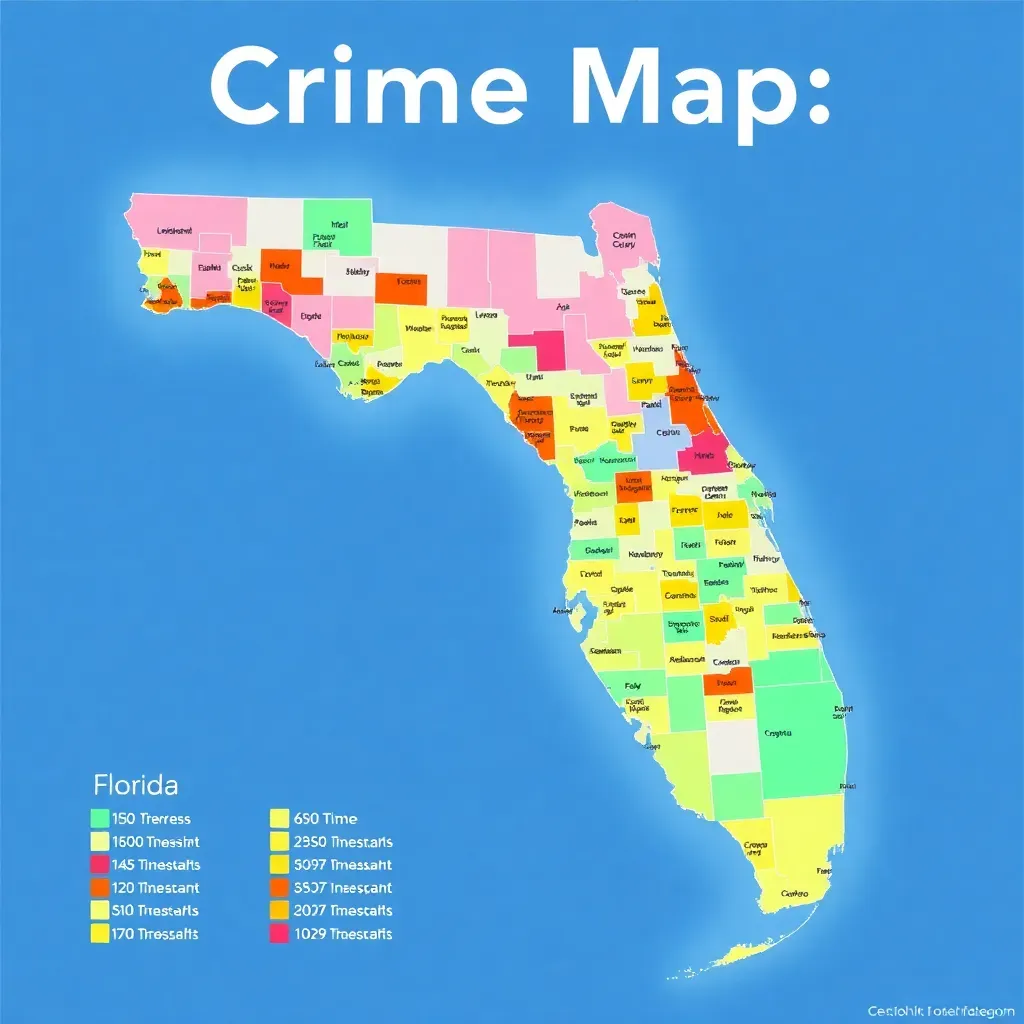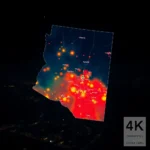Crime map of Florida: uncover shocking hotspots you won’t believe
- Crime Maps: What They Are and Why They Matter
- How Crime Data Is Collected and Reported in Florida
- Top Crime Hotspots in Florida: Cities and Neighborhoods You Need to Know
- Breaking Down Crime Types: What’s Really Going On in Florida’s Risky Towns
- How to Use an Interactive Crime Map of Florida to Stay Safe
- Community Voices: What Locals Say About Crime and Safety in Florida
- Comparing Crime Mapping Tools: Which One Works Best for Florida?
- What To Do If Your Area Shows No Crime Data: How To Get Involved
- Staying Safe Beyond the Map: Practical Tips for Navigating Florida’s Risky Neighborhoods
- What You Need to Remember About Florida’s Crime Map and Hotspots
- Sources and Further Reading
Crime Maps: What They Are and Why They Matter
Crime maps are tools that visually display where different types of crime happen across neighborhoods, cities, or regions. They help you spot risky towns in US and sketchy spots in Florida by showing patterns and concentrations of incidents reported by police and community members.
These maps combine official police data with community reports, giving a fuller picture of safety. While police data covers reported crimes, community input can highlight areas where incidents might be underreported or where residents feel less safe. This mix helps you understand not just where crimes are recorded, but also where people feel the streets are unsafe or crime-ridden.
Interactive crime maps let you filter by crime type—like violent crimes, theft, or vandalism—dates, and specific neighborhoods. This means you can zoom in on your own block or check out a city you’re visiting. Sometimes, you might see areas with no data. That usually means either the local police department doesn’t share data publicly or there haven’t been recent reports. It’s important to know that no data doesn’t always mean a place is safe—it might just be less transparent.
Florida Crime Mapping Tools Comparison
CrimeMapping.com
- Data Sources Police & Sheriff’s Offices
- Update Frequency Daily to Weekly
- Ease of Use High
- Alert Options Custom Alerts
- Coverage Major cities & counties
LexisNexis Community Crime Map
- Data Sources Law Enforcement Agencies
- Update Frequency Weekly
- Ease of Use Moderate
- Alert Options Alerts Available
- Coverage Wide coverage, some gaps
Local Sheriff’s Office Maps
- Data Sources Local Police Data
- Update Frequency Varies
- Ease of Use Varies
- Alert Options Limited
- Coverage County-specific
Key Takeaways
CrimeMapping.com is your go-to for daily updates and custom alerts, perfect if you want real-time info for major Florida cities. LexisNexis offers broader coverage but updates less often and has some gaps. Local sheriff maps give detailed, county-level info but can be inconsistent in updates and alert options. Picking the right tool depends on whether you want speed, coverage, or local detail.
How Crime Data Is Collected and Reported in Florida
Crime data in Florida comes from multiple sources: police departments, sheriff’s offices, and community reports. These agencies collect information on incidents like arrests, reported crimes, and sometimes even calls for service. The data covers various crime types, including violent crimes (like assault or robbery) and property crimes (such as burglary or vehicle theft).
Data is typically updated regularly—some maps refresh daily, others weekly or monthly. However, accuracy can vary due to underreporting (not all crimes get reported), delays in processing, and privacy rules that limit what can be shared publicly.
Automated systems help gather and organize this data, but community input is crucial. Residents reporting suspicious activity or incidents help fill gaps and keep the maps current. This partnership between official sources and community voices makes crime maps more reliable and useful.
Top Crime Hotspots in Florida: Cities and Neighborhoods You Need to Know
Florida has its share of danger zones, where crime rates tend to be higher. Let’s look at some cities and their neighborhoods that often appear on crime maps as crime-heavy areas in Florida.
- Miami Known for its vibrant culture but also some gritty areas where residents warn about incidents after dark. Neighborhoods with crime-ridden reputations often have lower lighting and less police presence at night.
- Orlando Popular with tourists, but locals mention sketchy neighborhoods in US that visitors should avoid late at night. Community forums often share tips on safer routes and areas.
- Tampa Some rough neighborhoods in America here have seen recent upticks in property crimes. Residents recommend staying alert in certain districts, especially after sunset.
- Jacksonville Known for a few dodgy cities in America pockets, but also strong community efforts to improve safety through neighborhood watches and local policing.
- Fort Lauderdale, West Palm Beach, St. Petersburg, Tallahassee, Daytona Beach, Hialeah These cities have varied crime levels, with some neighborhoods flagged as unsafe places in US on crime maps. Locals often advise caution in specific blocks or streets, especially at night.
Maps and visuals highlight these crime-ridden and dicey areas, helping you avoid messed-up spots. Understanding how to read these maps lets you make smarter choices about where to live, work, or visit.
Breaking Down Crime Types: What’s Really Going On in Florida’s Risky Towns
Florida’s crime landscape includes several types of offenses:
- Violent crimes These include murder, robbery, and aggravated assault. Some cities report higher rates, often concentrated in specific neighborhoods.
- Property crimes Theft, burglary, and vehicle break-ins are common, especially in urban areas. Certain districts show persistent issues with these incidents.
- Other incidents Vandalism, drug-related offenses, and weapons violations also appear on crime maps. These can fluctuate based on local enforcement and community activity.
Crime types vary widely by city and neighborhood. For example, a neighborhood might have low violent crime but higher property crime rates. Knowing these details helps residents and visitors understand what risks they might face and how to prepare.
How to Use an Interactive Crime Map of Florida to Stay Safe
Using an interactive crime map is easier than you might think. Here’s a quick guide:
- Choose a platform like CrimeMapping.com, LexisNexis Community Crime Map, or your local sheriff’s office map.
- Enter the location you want to check—your neighborhood, a city, or a place you plan to visit.
- Use filters to select crime types (violent, property, etc.) and dates to see recent incidents.
- Set up alerts to get notifications about new crimes in your area or places you care about.
- Look for clusters of incidents or patterns that might indicate shady or dodgy areas.
Many people have used these maps to avoid trouble zones, plan safer routes, or decide where to move. It’s a powerful tool for staying informed and proactive.
Community Voices: What Locals Say About Crime and Safety in Florida
“I’ve lived in Miami for years, and the crime map helped me spot which blocks to avoid after dark. It’s not about fear, just being smart.” – Local resident, Miami [source]
“Orlando’s tourist areas look safe on the map, but some neighborhoods nearby have had incidents. Community forums helped me learn where to be cautious.” – Visitor, Orlando [source]
“The crime map is great, but sometimes data is missing for my neighborhood. We’ve started a local watch group to share info directly.” – Jacksonville resident [source]
Comparing Crime Mapping Tools: Which One Works Best for Florida?
| Platform | Data Sources | Update Frequency | Ease of Use | Alert Options | Coverage of Florida Cities |
|---|---|---|---|---|---|
| CrimeMapping.com | Police Departments, Sheriff’s Offices | Daily to Weekly | High | Custom Alerts | Major cities & counties |
| LexisNexis Community Crime Map | Law Enforcement Agencies | Weekly | Moderate | Alerts Available | Wide coverage, some gaps |
| Local Sheriff’s Office Maps (e.g., Volusia County) | Local Police Data | Varies | Varies | Limited | County-specific |
Each tool has pros and cons depending on your needs. For daily safety checks, CrimeMapping.com’s frequent updates and alerts are handy. For moving research, LexisNexis offers broader data but with some delays. Local maps provide detailed info but may lack coverage.

What To Do If Your Area Shows No Crime Data: How To Get Involved
Sometimes, your neighborhood might not appear on crime maps. This can happen if local police departments don’t share data publicly or if there are privacy concerns.
You can help by:
- Contacting your local police department’s public information officer to ask about crime data sharing.
- Encouraging community groups to report incidents and participate in neighborhood watches.
- Supporting efforts to get your agency involved with platforms like CrimeMapping.com.
Community voices matter more than websites alone. When residents speak up, agencies are more likely to share data and improve transparency.
Maps are great, but real safety comes from smart habits:
- Stay in well-lit areas, especially at night.
- Be aware of your surroundings and avoid crime hotspots when possible.
- Join or support neighborhood watch programs.
- Use local alerts and apps to get real-time updates.
- If you witness or experience crime, report it promptly to authorities.
These simple steps help you stay safe without living in fear.
What You Need to Remember About Florida’s Crime Map and Hotspots
Crime maps of Florida offer valuable insights into danger zones and crime-heavy areas in Florida. By understanding how to use these tools and staying aware of local conditions, you can protect yourself and your loved ones.
Remember, maps are tools—not guarantees. Your awareness, community involvement, and smart choices make the biggest difference.
Sources and Further Reading
- LexisNexis® Community Crime Map
- CrimeMapping.com
- CrimeMapping Broward County Map
- CrimeGrade Florida Safety Map
- Volusia County Sheriff’s Office Crime Mapping
- DeLand Police Department Crime Mapping
- Pinellas County Crime Viewer
- City of Plantation Crime View
- Florida Violent Crime Map
- Florida Health CHARTS Violent Crime Report
What do you think about Florida’s crime map? Have you used an interactive crime map to stay safe or avoid sketchy neighborhoods? How would you like to see crime data improved or shared in your community? Share your thoughts, questions, or experiences below!
 Most dangerous cities in Florida you won’t believe are real
Most dangerous cities in Florida you won’t believe are real Crime map of Arizona: uncover shocking hotspots you won’t believe
Crime map of Arizona: uncover shocking hotspots you won’t believeSi quieres conocer otros artículos parecidos a Crime map of Florida: uncover shocking hotspots you won’t believe puedes visitar la categoría Florida.

Leave a Reply